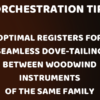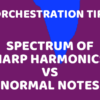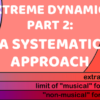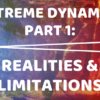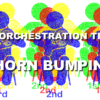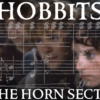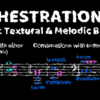10:30 p.m. Very little in the way of work today. I tried out the new camera, shining a light against the wall in a dark room, then checking the corners of the image for noise. There’s still some, but not so pronounced as with my cheap little pocket camera. Hopefully, this will resolve the resolution problems I’ve been having. I don’t like having to import video files into iMovie, though – that just adds another step, or rather, several hundred more steps as I process the footage for each cue in the rest of the 17-hour series of courses. Perhaps if I save to an SD card, then I can dump directly from its directory to my laptop. I’ll try that out tomorrow.
I promised more conductor notes from the harp concerto, so here they are. Today’s installment will cover movement one. In keeping with the usual structure of a modern concerto, the first movement takes up nearly half of the duration, and almost equals the other two movements in length of bars (289 vs. 97+207). It’s 49 pages to the second and third movements’ combined 59. Finally, the space-saving and therefore time-eclipsing device of split systems occurs with more frequency on these first pages, due to the delicacy and subtlety of the textures.
I set aside a more rigorously structured sonata allegro form in favor of a fantasia that emulated the natural course of the shifting weather patterns that the music is depicting: slowly building tension sometimes evaporating, sometimes fulfilling its apprehensions; open, empty blue textures with an overarching sense of aloneness in the center, then light breezes and and the sharp sense of a watchful eye; then thundering, aggressive motion, tearing at complacency, then breaking into footless, slowly falling mist. It’s the rage and the peace of the New Zealand sky that I’ve seen from mountaintops, and from the window of my little home set on a ridge high over Wellington Harbor. This is truly the Land of the Long White Cloud (Aotearoa), but that’s not a soft, pillowy cloud by any means.
Here was the guidance through that treacherous landscape that I wrote down for my conductor…
**********************
Movement I
bars 7-19 – the rising theme needs a little work so that it cleanly transitions from trombone to horn III to horn I (I probably should have scored it all horn I, but there it is)
bar 21 – does the timpanist need more of a cue?
fig. D – wondering if we can lift slightly out of bar 59 and place the downbeat of bar 60
bar 116 – check tuning
bars 141-144 – solo bassoon can play out just a hair more.
bars 271-272 (just before fig. O) – cellos sounded very uncertain on that little bit of transitional melody. It sounded like some weren’t playing the part – are they all together at the marking “unis.?”. I’m wondering if that section could be more deliberate, tying in with the end of the molto rit. so the cellos really lead clearly into figure O.
******************
And now, a few words of explanation for posterity. As I mention above, a “rising theme” ascends from bass trombone to third horn to first horn at the start of the piece. In yesterday’s entry, I mentioned that I’d missed hearing the third horn in this place, and that the trombone line really needed to be a solo. There were also so many players missing from the orchestra at the last rehearsal, that I couldn’t quite make out whether the finer textures of accompaniment were fully realized – but it’s not worth mentioning until I hear the whole ensemble in a couple of days.
Then, at the end of the movement and the notes above, I mention that the cellos are a bit vague just before the final episode. Clarifying this transition is crucial – but there’s a part of me that feels the anxiety a bit too much, because of the accidental way that these bars were conceived. Despite the fact that the music slows down hugely, backs off to a single cello line, then lifts off into a sparkling mist, these last two dozen bars were composed and scored at a white heat in one morning, as I was desperately trying to get the first movement finished before starting a script for a Radio New Zealand Concert production. The cello line was put in as an afterthought as I set up the harmony for the coda, then as I filled in the staves around it, I saw how it stood out and prepared the listener for turning of emotion, the shifting of perspective. As I usually have things almost fully worked out many bars in advance as I compose, this was a rare instance of the score talking back to me, guiding the music’s path into a clearer direction.
Thus the even more potent edge to my concern that the cello should sound spotless, guiding the whole orchestra to a new level of intangible emotion. Without it, the ending is just meaningless fluff. With it done well, the sense of yearning is transformed, leaving the audience both fulfilled and bereft (or at least the audience within me).
The other notes are mere bits of tightening and adjusting, like maintenance work on the engine of this musical vehicle, but one part I’m really quite happy about, and I want to hear even more clearly. That’s the bassoon solo at bar 141, part of the development of the third main theme, and the underpinning to the accompaniment of tremolo strings behind the harp. This is actually a bit of overtone sleight-of-hand – the strings are playing harmonic groupings of stacked fourths that are complementary to the 6/4 inversions of the harp, but not parallel to their melodic curve. Beneath this shifting harmonic picture, the bassoon tracks the harp melody at a 6th, i.e. on the 5th of each triad. Because of the timbre of the harp, the uncertain consonance of the strings, and the complex overtones of solo bassoon in that register, there’s a sense of simultaneous saturation of color and yet lightness of touch. This went very well in rehearsal, and could be even better with the bassoonist at mf instead of the mp that was played that night. The bassoon has to be a shade louder than the strings for the radiance to really click.
Tomorrow: taming the heartbeat of my forest, and balancing the crest of my harmonic ocean, as we look at the notes for movements 2 & 3.


